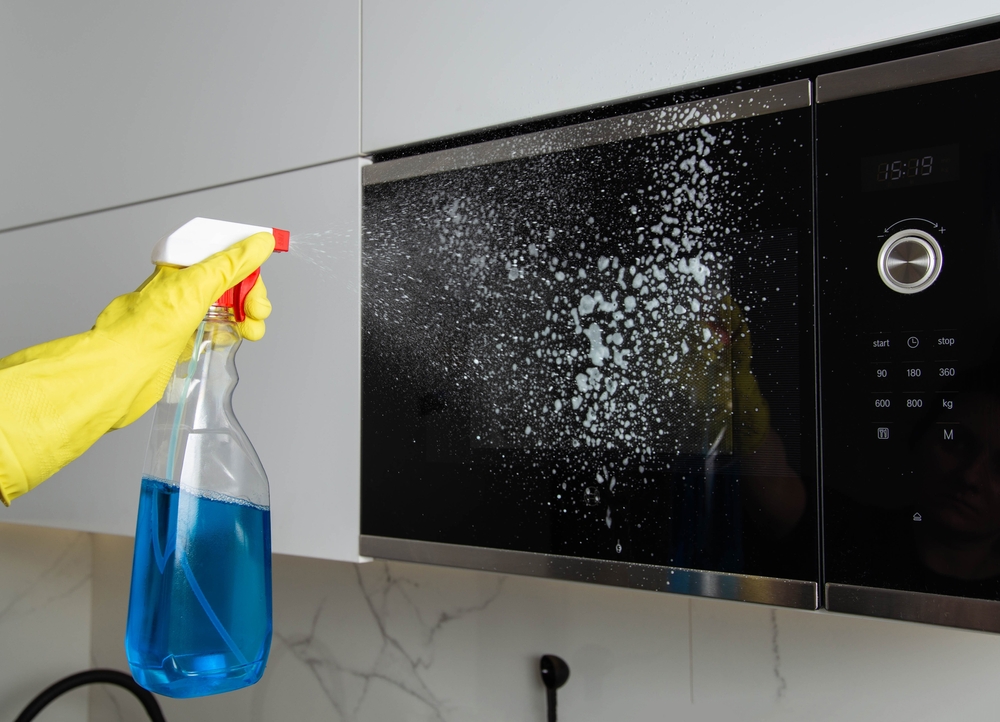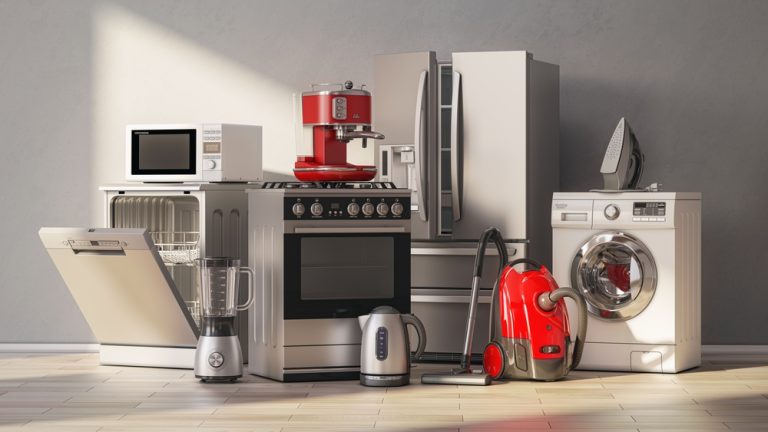How to Clean Black Kitchen Appliances?

Black kitchen appliances are sleek, modern, and popular for creating a sophisticated look in the kitchen. However, keeping them spotless can be challenging, as they tend to show fingerprints, smudges, and dust more easily. Knowing how to clean black kitchen appliances properly is essential to maintaining their appearance and ensuring they stay looking as pristine as the day you bought them. I
n this guide, we’ll explore the best methods and tips for cleaning black kitchen appliances, ensuring a streak-free and polished finish.
Why Proper Cleaning of Black Kitchen Appliances is Important?
Before diving into the specific steps on how to clean black kitchen appliances, it’s important to understand why proper cleaning is essential.
Maintaining a Sleek Appearance
- Fingerprints and Smudges: Black surfaces, especially glossy ones, tend to show fingerprints, smudges, and streaks more easily than other finishes. Regular cleaning helps maintain the sleek and polished look that makes black appliances so appealing.
- Dust and Lint Accumulation: Dust and lint can accumulate on black surfaces, making them appear dull or dirty. Proper cleaning removes these particles and helps the appliances maintain their shine.
Prolonging Appliance Lifespan
- Avoiding Wear and Tear: Cleaning black kitchen appliances regularly helps prevent wear and tear caused by grime buildup. Dirt, grease, and food particles can accumulate on appliance surfaces, potentially leading to discoloration or damage over time.
- Keeping Components in Good Shape: Regular maintenance and cleaning can also prevent mechanical issues, such as sticky buttons or clogged vents, ensuring your black appliances remain in excellent working condition.
What to Avoid When Cleaning Black Kitchen Appliances?
Before learning how to clean black kitchen appliances, it’s important to know what cleaning methods and products to avoid, as improper cleaning can cause more harm than good.
Avoid Abrasive Cleaners
- Harsh Scrubs and Cleaners: Abrasive sponges, steel wool, and harsh cleaners can scratch the surface of black appliances, leaving visible marks. Stick to soft cloths and gentle cleaning solutions to protect the finish.
- Bleach-Based Products: Avoid using bleach or other harsh chemicals that can damage the surface of black appliances or cause discoloration. Always check the label of cleaning products to ensure they are safe for use on black surfaces.
Stay Away from Drying Cloths with Lint
- Lint-Prone Cloths: Some drying cloths or paper towels can leave lint or fibers behind on black surfaces, making them appear dusty even after cleaning. Opt for lint-free microfiber cloths to ensure a streak-free finish.
Step-by-Step Guide on How to Clean Black Kitchen Appliances
Now that you know what to avoid, let’s explore the best techniques for how to clean black kitchen appliances.
Step 1: Gather Your Cleaning Supplies
Before you begin, gather the following cleaning supplies for the best results:
- Microfiber Cloths: Soft, lint-free microfiber cloths are ideal for wiping down black appliances without leaving streaks or scratches.
- Mild Dish Soap: A few drops of mild dish soap mixed with warm water can effectively clean black appliances without damaging the finish.
- White Vinegar: For tougher stains or greasy residue, a solution of white vinegar and water can help break down grime.
- Glass Cleaner (Ammonia-Free): An ammonia-free glass cleaner can be used on glossy black surfaces to remove streaks and fingerprints.
- Baking Soda (Optional): For stubborn stains or grease, baking soda can be used as a gentle scrub.
Step 2: Start with a Gentle Wipe Down
- Dampen a Microfiber Cloth: Dampen a microfiber cloth with warm water and a drop of mild dish soap. Wring out the cloth to ensure it’s not overly wet, as excess water can leave streaks or drip into appliance crevices.
- Wipe Down the Surface: Gently wipe down the entire surface of the black appliance, focusing on areas with visible dirt, fingerprints, or smudges. Be sure to clean around handles, buttons, and corners where grime tends to accumulate.
- Rinse with Clean Water: Dampen a second microfiber cloth with clean water (without soap) and wipe away any soapy residue from the appliance’s surface.
Step 3: Tackle Grease and Stubborn Stains
- Use Vinegar for Grease: If you’re dealing with greasy spots or stubborn stains, create a cleaning solution by mixing equal parts white vinegar and water in a spray bottle. Spray the solution onto the affected area and let it sit for a few minutes.
- Wipe Away the Grease: After letting the vinegar solution sit, use a clean microfiber cloth to wipe away the grease and residue. The vinegar helps break down grease without leaving streaks.
- Baking Soda Paste for Tough Stains: For particularly tough stains, mix a small amount of baking soda with water to create a paste. Apply the paste to the stain, let it sit for 10-15 minutes, and then wipe away with a damp cloth.
Step 4: Polish for a Streak-Free Finish
- Use Glass Cleaner for Glossy Finishes: If your black appliances have a glossy or glass-like finish, an ammonia-free glass cleaner can help give them a streak-free shine. Spray a small amount of cleaner onto a microfiber cloth and wipe the surface in circular motions.
- Buff with a Dry Cloth: After cleaning, buff the surface with a dry microfiber cloth to remove any remaining moisture or streaks, leaving the appliance looking polished and new.
Step 5: Clean Small Crevices and Controls
- Use a Soft Brush: For small crevices, buttons, and control panels, use a soft toothbrush or a cotton swab dipped in your cleaning solution to gently scrub away dirt and grime. Be careful not to press too hard, especially on sensitive control panels.
- Dry Thoroughly: After cleaning the small areas, use a dry microfiber cloth to wipe away any remaining moisture.
Tips for Maintaining Black Kitchen Appliances
Now that you’ve learned how to clean black kitchen appliances, here are some additional tips to help you maintain their sleek appearance over time.
Regular Maintenance
- Daily Wipe Down: Make it a habit to wipe down black kitchen appliances daily with a dry microfiber cloth. This prevents dust, fingerprints, and smudges from building up, making your cleaning routine easier.
- Clean Spills Immediately: If food or liquids spill onto your black appliances, clean them up immediately to avoid stains or residue buildup.
Prevent Streaks
- Buff After Cleaning: After cleaning, always buff the surface with a dry microfiber cloth to remove any streaks or watermarks. This is especially important for glossy black surfaces that can easily show imperfections.
- Avoid Over-Wetting: When cleaning black appliances, avoid using too much water or cleaning solution. Excess moisture can leave streaks or drip into small crevices, which may affect the appliance’s performance.
Protect from Scratches
- Use Soft Materials: Always use soft microfiber cloths or sponges when cleaning black appliances to avoid scratches. Never use abrasive sponges or scrubbing pads on black surfaces.
- Keep Sharp Objects Away: Avoid placing sharp objects, such as knives or utensils, directly on black appliance surfaces to prevent scratches or damage.
Conclusion
Learning how to clean black kitchen appliances properly is key to maintaining their sleek, modern look and ensuring they remain in top condition. By using gentle cleaning methods, such as microfiber cloths, mild dish soap, and vinegar solutions, you can keep your black appliances free from smudges, grease, and dust. With regular maintenance and the right techniques, your black kitchen appliances will stay looking pristine and polished for years to come.






